Slippery Jack / Summer / Autumn / Edible
Scientific Name
Suillus luteus
Common Names
Slippery Jack
Family
Suillaceae
Habitat
They form mycorrhizal relationships with coniferous trees, most often with Scot Pine (Pinus sylvestris). They are fairly common and sometimes appear in large numbers.
Description
An edible species but the caps are rather slippery or greasy (hence the common name), its part of the Bolete family but it has a visible ring on the stem.
Identifying Features:
Cap:
The caps generally remain convex in shape, they are chestnut brown in colour, are greasy or sticky to touch and grow up to 10cm in diameter. The flesh is yellow, soft and it doesn’t change colour when damaged.
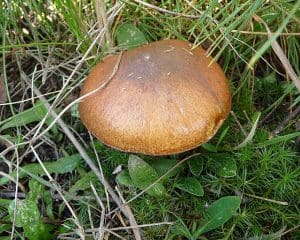
Stem:
Pale yellow in colour, they have a large stem ring, that is white when young but develops a purple tinge as the mature. Above the ring the stem is covered in a pattern of dots. Up to 10cm long.
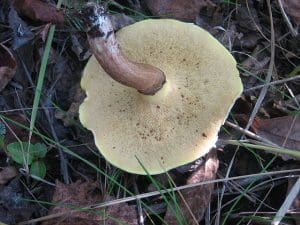
Gills:
They lack gills and release their spores from tubes. The round, tubes are yellow when young but darken slightly with age. Often young specimens have a veil covering the tubes this breaks away and becomes the ring.
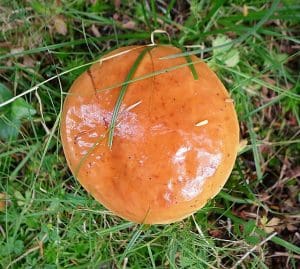
Smell:
No strong aroma.
Spores:
Yellow to buff.
Uses
In food
They are edible but are not highly regarded due to their greasy caps. It’s best to remove the cap skin and the tubes before cooking. They have an OK flavour, I tend to dry and powder them and use them as a seasoning. To be honest they are better mushrooms available at this time of year.
In Eastern Europe they tend to be blanched before cooking to remove the slimy coating.
Known hazards
Suillus mushrooms have been known to cause gastric upsets in some. Removing the caps and tubes reduces the risk but if it is your first time trying them, you’re advised to taste a small piece and wait for 24 hours to see whether there are any adverse reactions.
Potential lookalikes
They could be confused with other Suillus species for example the Larch Bolete (Suillus grevillei) but this is generally more orange in colour, grows with Larch and has angular shaped pores.
As with all Bolete’s remember the rule ‘Red or Blue, will make you spew’. And you’ll stay safe.
Extra Notes from the foragers
The Suillus genus is part of the wider Bolete family they are typically identified by growing with coniferous trees (particularly Pines), having slimy or greasy caps when moist and having large pore openings. Some are highly regarded by chefs but the majority are ignored due to the texture of the caps. I’d rate them as OK and I do eat them if there’s nothing around.
The name Suillus comes from the Latin word ‘sus’ for pig, so Suillus means ‘of pigs’ in reference to their slimy caps.
Reference:



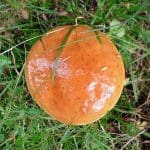
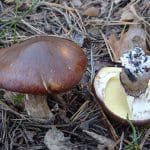
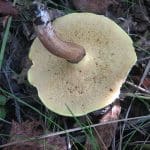
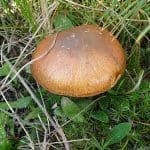



Leave a Reply
You must be logged in to post a comment.